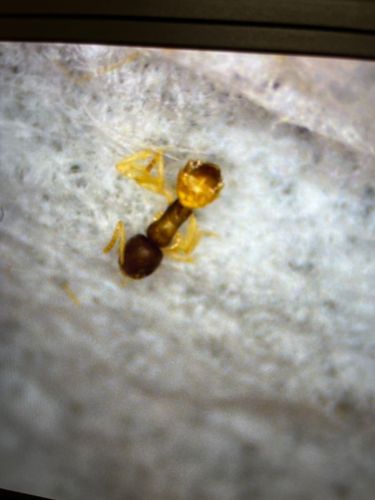Pharaoh Ant
Scientific Name: Monomorium pharaonis
Order & Family: Hymenoptera, Formicidae
Size: Workers are typically 1.5 to 2 mm (1/16 inch) long. Queens are larger, about 3.5 to 5 mm.

Natural Habitat
Pharaoh ants are almost exclusively an indoor pest in temperate climates, requiring heated structures to survive. They prefer warm, humid environments and can be found nesting in wall voids, insulation, behind baseboards, under floors, in electrical outlets, and within furniture. They are a common pest in residential homes, apartments, hospitals, grocery stores, and other commercial buildings.
Diet & Feeding
Pharaoh ants are omnivores with a preference for high-protein and high-carbohydrate foods. They feed on sweets, oily foods, meats, dead insects, and even shoe polish and other household items. In hospitals, they are known to feed on sterile instruments, IV solutions, and even wounds.
Behavior Patterns
Pharaoh ants are highly social insects that live in large colonies with multiple queens. They are known for their ability to bud, meaning a queen and a group of workers can break off from the main colony to form a new one, making them notoriously difficult to exterminate. They are persistent foragers and establish well-defined trails to food sources. They are active year-round in heated structures.
Risks & Benefits
Pharaoh ants pose several risks, primarily as a nuisance and potential vector for pathogens. In hospitals, they can spread bacteria and other disease-causing organisms by crawling over contaminated materials and then over sterile areas, posing a risk of nosocomial infections. They can also contaminate food products. They have no known benefits to humans or the ecosystem as an indoor pest.
Identified on: 9/4/2025